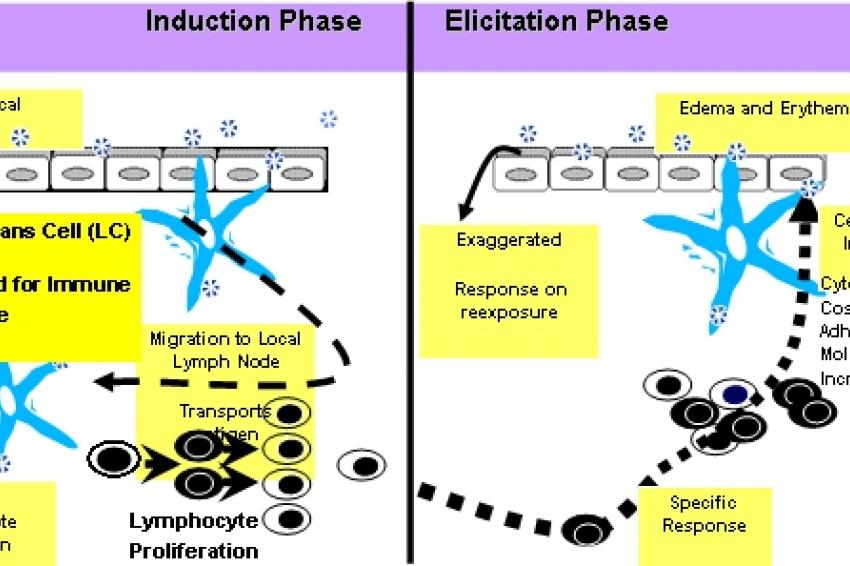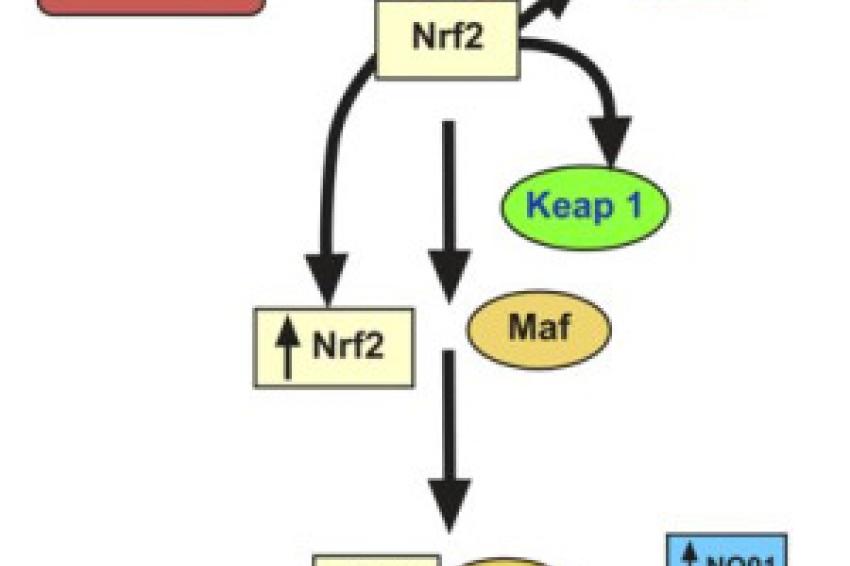Beyond Animal Testing
A Novel Alternative Method for Detecting Skin Sensitizing Chemicals
Changing Times - For more than 50 years, animals have been used as human surrogates in studies designed to evaluate the safety of new drugs, chemicals, and personal care products. Pressure from consumer groups, animal activists, scientists and new legislation in the EU has forced the manufacturers of these products to improve the safety testing process and where possible to replace animal tests with non-animal or alternative models.
Animal data obtained from safety pharmacology studies on new drug candidates has provided a reasonable assessment of potential human adverse events and have enabled pharmaceutical companies to develop and introduce many useful and safe drugs to the market. Unfortunately, there is a growing list of drugs where data obtained in animals did not predict the observed toxicity in humans. Cell-based in vitro models that allow scientists to understand the relationship between a new drug's intended target and observed toxicity can help identify the mechanism of toxicity. Alternative models can provide information on target organ and species specific toxicity. Obtaining this information early in drug discovery improves the candidate selection process.
Reach and the Cosmetics Directive
Unlike pharmaceutical drugs, commercial chemicals and personal care products are typically not intended to be ingested by humans. Nevertheless, these compounds must be evaluated for potential human toxicity. Two important pieces of legislation put forth by the European Union - Reach and amendment VII to the Cosmetics Directive - have accelerated the development of alternative methods. Reach is an attempt to standardize and harmonize the chemical registration process in Europe. The amount of testing required is directly dependent on the tonnage of substance manufactured per year. Although the use of safety data obtained from animal studies is not banned in the Reach initiative, there is a clear mandate that when an approved alternative method exists, it should be used. In vitro methods can be used under Reach to bridge data gaps, perform initial screens, and provide regulatory safety data on parameters such as skin corrosion, irritation, and sensitization.
The Cosmetics Directive differs from Reach in that it proposes to ban the use of animals for evaluating the toxicity of chemicals used in cosmetic products. The implementation of the ban on animal testing for cosmetic products was divided into two groups. The first banned the use of animals in tests for skin corrosion, skin irritation, percutaneous absorption, phototoxicity, genotoxicity, ocular irritation, and acute oral toxicity in March 2009. The second group includes tests for more complex endpoints such as carcinogenicity, reproductive toxicity, and skin sensitization. The proposed deadline for these tests is 2013. Meeting the 2013 deadline for these complex safety tests without compromising public safety will be a formidable challenge for the scientific community.
A New In Vitro Method
The ability to determine if a chemical or finished product that is intended to be applied to the skin as a sensitizer is a major concern for manufacturers. Current in vivo testing strategies include the guinea pig maximization test, the mouse local lymph node assay and the human patch-test. These tests involve the use of animals or human volunteers, are labor intensive, require several weeks, and are costly. A bright spot in this endeavor has been the development of a new alternative method capable of identifying chemical sensitizers and their potency category. The development and validation of an alternative method that possesses high sensitivity and specificity would be of high value.
In order to fully understand how a new in vitro method for identifying a chemical sensitizing agent works, it is important to understand the chemical sensitization process. In a nut shell, chemical sensitization or allergic contact dermatitis (ACD) is an immunological response that occurs upon repeated dermal exposure to an allergen (chemical). Common examples of compounds that cause ACD are poison ivy, cosmetics, food additives, latex, metals, and commercial chemicals. Symptoms include inflammation, itching, redness, and swelling of the exposed skin area.
The process begins when a chemical comes in contact with the skin and is absorbed. Many biochemical processes are activated as chemicals enter the skin. Most chemical sensitizers are either directly reactive (electrophilic) or can be metabolized to a reactive intermediate. These reactive molecules activate the antioxidant response element (ARE/EpRE) signaling pathway. Natsch and Emter demonstrated that this signaling pathway could be used to detect chemical sensitizers. Most chemical sensitizers are small molecules and as such are not recognized by the immune system as foreign. Therefore, a key property of chemical sensitizers is their ability to bind to endogenous proteins a process known as haptenization. Protein binding of chemicals has been developed as a screen for identifying chemical sensitizers. The chemical-protein complex is then recognized and taken up by the dendritic cells of the skin known as Langerhan's cells. The Langerhan's cells transport the chemical-protein complex to the local lymph nodes where it causes proliferation of T-lymphocytes capable of recognizing that specific allergen. These events are known collectively as the induction phase of sensitization. A subsequent exposure to the same allergen triggers an exaggerated T-cell mediated response known as the elicitation phase (fig. 1).
The in vitro method developed at CeeTox, a small specialty contract research laboratory that focuses on in vitro models for predicting toxicity, is based on known biochemical mechanisms and processes combined in a novel manner that enables the data to not only identify whether a chemical is positive or negative, but also places it into a potency category. Human keratinocytes grown in culture are used as the test system. The approach takes advantage of an intrinsic sensor system (ARE/Eph) that is present in skin cells and is capable of responding to electrophilic agents by signaling the expression of cellular defense proteins. The method monitors the expression of several ARE/EpRE controlled genes (fig. 2). This information is combined with glutathione binding, cell viability, and concentration response data to yield a toxicity index for the test agent. CeeTox has tested this approach with more than 100 chemicals and the method showed good sensitivity (81%) and specificity (92%). These values were similar to those obtained using the mouse local lymph node assay. The calculated toxicity index showed good correlation to actual LLNA values and was able to identify compounds as non-, weak, moderate, or strong sensitizers. The assay continues to undergo third party validation studies with initial results similar to those obtained during development. The method known as SenCeeTox offers a rapid, cost effective, method of identifying chemical sensitizers without the use of animals.
References are available from the author upon request.
Contact
CeeTox
4717 Campus Drive
49008 Klamazoo
Michigan
+1 845 624 0384
+1 845 652 0707







